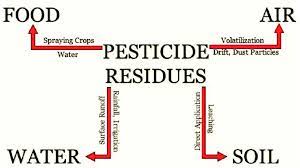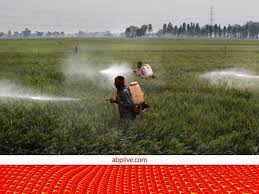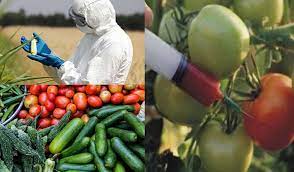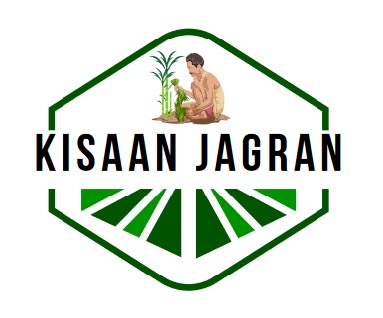
TO LANDFILLS AND COMPOST PFAS CHEMICALS MOVE FROM FOOD PACKAGING GROUND REALITY TO CROPS
TO LANDFILLS AND COMPOST PFAS CHEMICALS MOVE FROM FOOD PACKAGING GROUND REALITY TO CROPS
Dr. R. S. Sengar and Mukesk Sharma

NOT many realise the significance of an insight that a social media influencer recently shared on Instagram challenging the claims being made by the multinational giant Cadbury about its popular health drink, Bournvita. Revant Himatsingka was forced to withdraw his highly informative social media post after he was served a legal notice on behalf of the company.
The importance of carefully deciphering the claims that remain hidden among the technical ingredients mentioned on the pack is not only an extraordinary ability but has far reaching implications for the society. While Himatsingka's post could have, and in fact should have, made the Food Safety and Standards Authority of India (FSSAI) take appropriate steps to bring in tougher regulations to make the 'healthy' drinks available in the market, really healthy; it also must force the in- dustry not to hide behind the protective cloak of sensitive and commercially valuable information that cannot be publicly shared. A consumer has the absolute right to know what he or she is being served.

While there is no doubt in my mind that industry conceals more than what it reveals, the public largely remains ignorant till it triggers a serious health and envi- ronmental crisis. By that time a lot of dam- age has been done. This needs to be corrected.
Why I am saying this is because, howsoever well-informed you think you are, there are times that a revelation can shock you out of your wits. To cite an instance, a few days back I read that Maine has be- come the first state in the US to have imposed a ban, beginning 2030, on pesticides that contain toxic and harmful PFAS ingredients.

We all know that chemical pesticides are poisons and therefore harmful but it took me some time to figure out what the active ingredient PFAS stands for. A peer reviewed study The Devil they knew: Chemical Documents Analysis of Industry Influence on PFAS Science- and pub- lished (June 1, 2023) in the journal 'Annals of Global Health, expanded the acronym to 'Per-and polyfluoroalkyl substances, and explained that these are a class of widely-used chemicals that persist in the environment and bio-accumulate in humans and animals posing a global concern.
Not much is known about the harmful impact of PFAS on human health and environment in India. We tend to buy what the industries claim, and once these are approved by the concerned regulatory au- thorities, hardly any questions are asked. Like in the US where there have been. Number of cases where immense industry influence on science and policy has been reported, including from PFAS producing industries in at least four of the six strategic areas that were examined, in India too industry tends to hugely influence public policy. The banning of 27 pesticides in India, with pressure now being built to re- duce the ban to just three of these highly hazardous pesticides, is a case in the point.

Getting back to PEAS, take a look at the horrifying public health implications these chemicals pose. The PFAS as a group comprises some 12,034 variants, and have vast consumer and industrial applications. In the case of pesticides, an investigation by a formidable US-based public research organisation, the Environment Working Group (EWG), says that Maine has compiled a list of 55 active ingredients belong- ing to the PFAS group that have been in- tentionally added to commonly used pesticides, or pesticides contaminated with PFAS.
Using this data, the EWG found out that more than 1,400 pesticides, registered in Maine, use PEAS. It is heartening to find Maine pick up the courage to ban those chemicals, and I hope other States will follow soon. After all, there is no place for more potent toxins in our food. How- ever, in India, I am sure by now the industry and policy makers would have been up in arms citing food security concerns.
Nevertheless, another article in The Guardian (June 7, 2023) by Tom Perkins talks of how the chemical industry tried to hide evidence by withholding internal studies, like what was earlier done by the tobacco and biotech industry (and I would add sugar industry to the list). A DuPont internal study for instance had found that PFAS led to the enlargement of the liver of lab rats, and also caused birth defects among company's workers. Several other internal studies too brought out the health risks but were kept hidden.

"In the early 1980s, DuPont found elevated liver enzymes in 60 per cent of work- ers tested, and a confidential internal report detailed birth defects among pregnant plant employees. In the years that followed, 3M and DuPont internal studies found the chemicals likely caused prostate, testicular, bladder and kidney cancers," mentions the article. But in internal communications, the message conveyed was that all is well. Denying of any known adverse public health reaction, DuPont had said the chemicals are "about as toxic as table salt."
The Global Health journal study that I referred above stated that the industry knew as early as in 1970s that PFAS were "highly toxic when inhaled, and moderately toxic when digested." But then more evidence came out, but it was kept away from regulators. Studies conducted between 1969 and 1981 had shown "liver degeneration, enlarged livers, and increased liver enzymes in rats fed with low and high doses of chemical C8.
There have been cases where female employees were removed from areas where they were exposed to chemicals following internal surveys pointing to increased health and birth outcomes. Even low-dose of PFAS in drinking water has been associated with suppressing immune systems, reproductive problems, and increased the risk of cancer and cholesterol. Profits being the motive, these industries have kept such studies under wraps.
When used in pesticides, PFAS ingredients can be a risk for farmers, farm workers and their families. Known as 'forever chemicals' the PFAS are used because they do not break down in the environment, but they continue to build up in blood and in our organs. "Scientific studies show the alarming ways PFAS wreak havoc on human health, wildlife and environment," the EWG vicepresident for science investigations was quoted as saying.

It is quite obvious that PFAS use in pesticides formulations must be equally large in India. Public awareness being the first step to awaken and build up a public opinion, I am hoping that farmers and the civil society will call for a change in pesticide policies that aims to reduce the health and environmental havoc. At the same time, policy makers, as well as agricultural scientists, must study why and how Maine State in the US is trying to phase out pesticides with PFAS contamination. There are immediate lessons here.

Author: D. R. Sengar, director Training, Placement and Head of the Department of Plant Biotechnology Unit, Sardar Vallabhbhai Patel University of Agriculture and Technology Meerut.


